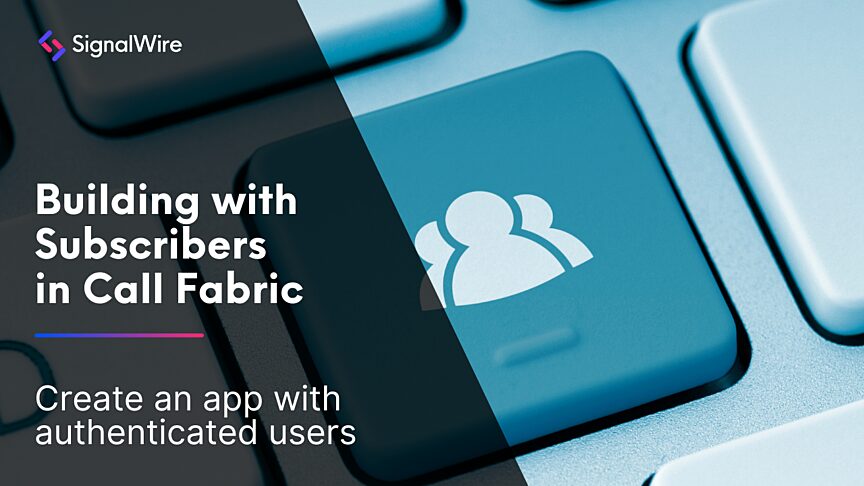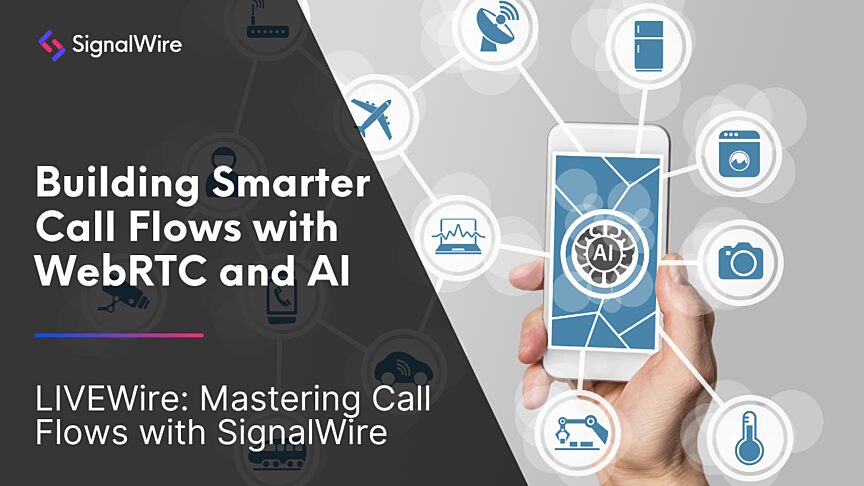WhatsApp Messaging Integration with SignalWire
SignalWire has officially launched an early access alpha for its WhatsApp integration, adding one of the most globally adopted messaging channels to its Programmable Unified Communications (PUC) platform.
The update unlocks inbound and outbound WhatsApp messaging directly within the SignalWire ecosystem, bringing a powerful new entry point to customer conversations.
For those operating in regions where WhatsApp is the default method of communication, this is a significant shift in how you can reach users and route those conversations with SignalWire, without additional infrastructure.
A direct line into WhatsApp’s global ecosystem
WhatsApp isn’t just a chat app. In many parts of the world, it is the internet. It’s where people talk to friends, message businesses, get updates, and often, where they expect customer support.
More than 2 billion people rely on Whatsapp daily, and its adoption is outpacing traditional SMS. For businesses looking to scale globally or improve accessibility in high-growth markets, WhatsApp offers a reach and engagement level that SMS simply can’t match.
With this integration, SignalWire allows you to meet users where they are without sacrificing the programmable power of your existing setup. WhatsApp becomes just another endpoint in your SignalWire deployment, one that can seamlessly connect to backend systems.
Customers can initiate contact through native WhatsApp Ads or Facebook page call-to-action buttons. These are highly visible, high-intent touchpoints. Once clicked, they open the WhatsApp mobile app and start a conversation via message with a Meta-verified business number.
From there, SignalWire takes over. Interactions are routed just like any other channel: through Call Flows, AI Agents, or SignalWire Markup Language (SWML) scripts you’ve already built.
Built for programmable messaging (and soon, voice)
Messaging is available right now. And voice is coming soon.
Prior to this release, building an intelligent WhatsApp-based experience meant stitching together siloed APIs while dealing with third-party gateways and completely separate vendors.
Now, SignalWire unifies the experience with:
Inbound messaging through WhatsApp that flows directly into your programmable stack
Outbound messaging initiated from your existing SignalWire workflows, pending appropriate user permissions
The same logic that powers your other communication channels
And the upcoming release of WhatsApp voice support will take this further.
Coming soon: Inbound and outbound WhatsApp voice
In the next phase of the integration, this will all be possible with voice as well. You’ll be able to accept inbound WhatsApp voice calls, automatically route those calls to SignalWire AI Agents or custom scripts, and trigger logic, collect user input, or escalate to live support, just like with SIP or PSTN.
It’s a natural extension of your existing setup, designed to bring AI-powered, voice-enabled experiences to one of the most widely used channels in the world.
How to get started with WhatsApp on SignalWire
To get started, you just need:
A Meta Business Account
A SignalWire Space enabled for the WhatsApp alpha
Once the connection is authorized, your registered business number can be used for inbound and outbound messaging and programmatic routing through SignalWire Resources. Everything is routed and billed through the same SignalWire platform your team already uses. There’s no additional tooling or third-party middleware required.
As voice capabilities roll out, that same number will support programmable inbound and outbound WhatsApp calling.
How to Join the WhatsApp Alpha
The alpha release is live now.
To join, simply submit a request and our team will follow up with next steps and access details.
We anticipate full general availability, including voice, within 60 days, pending validation from early adopters and production use cases.
Technical highlights
Here’s what the integration includes today:
Inbound and outbound messaging routed through the Relay REST Messaging endpoint
Originating traffic from Meta-verified business numbers
Coming soon:
Full routing for inbound and outbound WhatsApp voice calls
The ability to route calls through AI voice agents
Support for messaging fallback, allowing delivery via SMS/MMS if WhatsApp fails
Message template management
For building next-generation voice agents or real-time messaging systems, this closes a major gap. It expands your coverage and reach without adding architectural overhead.
One stack. All channels. Now including WhatsApp.
SignalWire’s platform is built on channel-agnostic, programmable infrastructure, whether it’s SIP, WebRTC, SMS, or now, WhatsApp. This new integration unlocks potential use cases for SignalWire users, like:
Multi-modal customer support in countries where WhatsApp is dominant
Sales and lead generation through WhatsApp Ads and CTA buttons
Two-way messaging triggered by platform events, alerts, or user actions
With WhatsApp messaging added to the SignalWire platform, developers have a direct, programmable way to reach customers around the world, connected to the most powerful programmable telecom stack available today.
If your users are on WhatsApp, your platform should be too. And now with SignalWire, it can be. Request early access today to start building and bring WhatsApp into your workflows.


